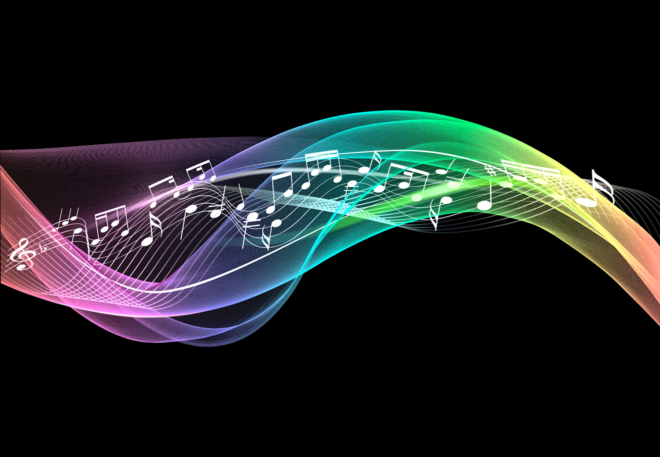Turning brainwaves recorded with EEG into sound has a fifty year history in art. With clever approaches to the signal, ‘listening’ to the EEG can go beyond art and into the realm diagnostics.
Music from EEG in Art
Alvin Lucier relaxed his mind. It was a tricky endeavor – one that was most successful with the least effort. He tried not to try. As he succeeded, music erupted. It was experimental at best. There was no melody, no harmony. It could end as abruptly as it started. The music was not tied to voice or initiated by instrument. It was the music of Lucier’s mind, thought to life with the brain waves, electroencephalogram (EEG) technology and percussion instruments. The sound carried through loudspeakers to an audience sat in silent awe. The year was 1965.
Music for the solo performer was an idea birthed of two great minds. The year before, famed physicist Edmond Dewan had shocked the world when he turned a lamp on and off with his mind, channeling his brain’s alpha activity with an EEG. He had connected the device to a beeper and spelled “I can talk” in morse code. Back then, it appeared nothing short of magic.
When Dewan met Lucier, science and art became unlikely collaborators. Dewan, an amateur organist himself, had been thinking about the intersection between brainwaves and music. Lucier had been searching for his voice, unmoved by the electronic music throughout Europe. He had become fascinated by more natural sounds that could be produced at home, without studio intervention. When Dewan suggested he make music with his mind, Lucier jumped at the opportunity. He chose percussion instruments and designed an EEG-based method of capturing alpha activity and transmitting them as music. He went on to perform the piece throughout Europe and the United States, sitting in silent calm as the music erupted around him.
Over fifty years later, we are still fascinated by music of the mind. In 1970, David Rosenboom’s Ecology of the Skin featured ten EEG-endowed performers creating a collective musical piece. Paras Kaul began performing The Brainwave Chick in 1998. Steve Mann and James Fung used the brain waves of 48 different people to fuel their own musical creation in 2003. As our understanding of the brain has evolved, so has our understanding of brain music.
The Challenge of Converting Brainwaves to Sound
What does the brain sound like? Like audio signals, brainwaves measured by EEG are time series spanning a range of frequencies. Human voice produces sound waves that range from 20 to 3000 Hz with most of the content in the range of a 100-300 Hz and most instruments create notes at frequencies of several hundred Hz as well. In contrast the EEG signal is more dominant in the range of 1-50 Hz although instrumentation often measures up to 1000 Hz. Essentially the power spectrum of the EEG decays much faster with increasing frequencies than with traditional music, losing much of the essence of audible sound from voice and instrument. This means that there is no simple way to ‘play’ the EEG in sound – at least in a way that will sound good. Raw brainwaves played as audio files sound like nothing more than an unimpressive low frequency rumble. Consequently, this leaves much to interpretation – and art. Elements of the signal can be used to modulate pitch, instruments choice and much more.
Power Spectra and Beyond
Alvin Lucier’s early method fifty years ago involved specifically using changes in the alpha oscillation to trigger instruments. The alpha oscillation is the most easily controlled in a number of ways for the type of ‘trigger’ experiment Alvin Lucier undertook. In another example, the product Muse, a consumer EEG headband, turns elements of the power spectrum into bird and wind sounds, helping you hear your brain state and determine whether it is active or calm, most likely again heavily focused on the low frequencies in the theta and alpha range. Such claims have some elements of truth but numerous confounds (see related post EEG and Meditation).
However the power spectrum is just one view into the brain, and a limited one (see related post The Blue Frog in the EEG). There many other elements or features of the signal that you can pick out by algorithm that are meaningful in sound.
The Sound of Seizure
One example is using sound derived from EEG to identify seizures. Seizure activity is typically identified by a subjective visual assessment of the signal by experts resulting in high error rates. Dr. Josef Parvizi at Stanford used an interesting approach to converting the EEG into sound using the signal to modulate a singing voice. With this approach he has found that the ears can identify the sound of a seizure more accurately than they are able to perform visual identification.. “I asked 52 of my colleagues, medical and non-medical, to try it out,” he told New Scientist. “After only 30 seconds of training, they chose the correct answer about 95 percent of the time when they heard eight clips we played to them.”
The applications of this, he says, are in diagnostics as a ‘brain stethoscope’ that can help emergency responders quickly ID a seizure. With innovative approaches to the conversion of brainwaves to sound, it may spawn a new way of diagnosing brain health conditions.
















